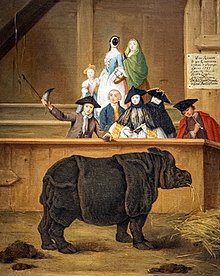Visard



A visard (also spelled vizard) is an oval mask of black velvet which was worn by travelling women in the 16th century to protect their skin from sunburn.[1] The fashion of the period for wealthy women was to keep their skin pale, because a tan suggested that the bearer worked outside and was hence poor. Some types of vizard were not held in place by a fastening or ribbon ties, and instead the wearer clasped a bead attached to the interior of the mask between their teeth. [2]
The practice did not meet universal approval, as evidenced in this excerpt from a contemporary polemic:
When they use to ride abroad, they have visors made of velvet ... wherewith they cover all their faces, having holes made in them against their eyes, whereout they look so that if a man that knew not their guise before, should chance to meet one of them he would think he met a monster or a devil: for face he can see none, but two broad holes against her eyes, with glasses in them.
—Phillip Stubbes, Anatomy of Abuses (1583)
In
England and Scotland
A Spanish observer at the
Observers noted that Anne of Denmark did not wear a mask outdoors on some public occasions. At the
In 1620 the lawyer and courtier John Coke sent clothes and costume from London to his wife at Much Marcle, including a satin mask and two green masks for their children.[14] Visards experienced a resurgence in the 1660s, as Samuel Pepys notes in his diary on June 12, 1663: "Lady Mary Cromwell... put on her vizard, and so kept it on all the play; which of late is become a great fashion among the ladies, which hides their whole face." Later that day, Pepys bought his wife a vizard.[15]
See also
- 1550–1600 in Western European fashion
Citations
- ^ Holme (1688).
- ^ Elgin (2005).
- ^ Portable Antiquities Scheme (2010).
- ^ Steward & Knox (1996), p. 56.
- ^ Muñoz (1877), p. 77.
- ^ Linthicum (1936), p. 272.
- ^ a b Arnold (1988), p. 12.
- ^ Pearce (2019).
- ^ Field (2019).
- ^ Lee (1972), pp. 34–5.
- ^ Steen (1994), p. 184.
- ^ Anonymous (1604), p. 22.
- ^ Green (1856), p. 141.
- ^ HMC (1888), p. 108.
- ^ Pepys (1967).
References
- Arnold, Janet (1988). Queen Elizabeth's Wardrobe Unlock'd. Maney. p. 12. ISBN 9780901286208.
- Relacion de la Jornada de Condestable de Castilla en Londres 1604. Antwerp. 1604.
- Elgin, Kathy (2005). Elizabethan England. Infobase Publishing. p. 38. ISBN 9781438121239.
- .
- Green, Mary Anne Everett, ed. (1856). Calendar of state papers, Domestic series, of the reign of James I. 1603—1610. London: Public Record Office.
- Eyre and Spottiswoode.
- Holme, Randal (1688). The Academie of Armorie.
A mask [is] a thing that in former times Gentlewomen used to put over their Faces when they travel to keep them from Sun burning... the Visard Mask, which covers the whole face, having holes for the eyes, a case for the nose, and a slit for the mouth, and to speak through; this kind of Mask is taken off and put in a moment of time, being only held in the Teeth by means of a round bead fastened on the inside over against the mouth.
- Linthicum, M. Channing (1936). Costume in the Drama of Shakespeare and his Contemporaries. Oxford: Clarendon Press.
- "Mask". Portable Antiquities Scheme. 2010.
- Lee, Maurice (1972). Dudley Carleton to John Chamberlain, 1603-1624. New Brunswick: Rutgers University Press.
- Muñoz, Andrés. (1877). de Gayangos, Pascual (ed.). Viaje de Felipe Segundo á Inglaterra. Madrid: Imprenta de Aribau y C.a.
- Pearce, Michael (August 2019). "Anna of Denmark: Fashioning a Danish Court in Scotland". The Court Historian. 24 (2): 142. .
- .
- Steward, James Christen; Knox, George (1996). The mask of Venice: masking, theater & identity in the art of Tiepolo & his time. ISBN 9780295976112.
- Stuart, Arbella (1994). Steen, Sara Jayne (ed.). The Letters of Lady Arbella Stuart. Oxford University Press.
External links
- Details of a visard in the collection of the Norwich Castle Museum
- A miniature visard made for a 17th-century child's doll in the collection of the Victoria and Albert Museum


